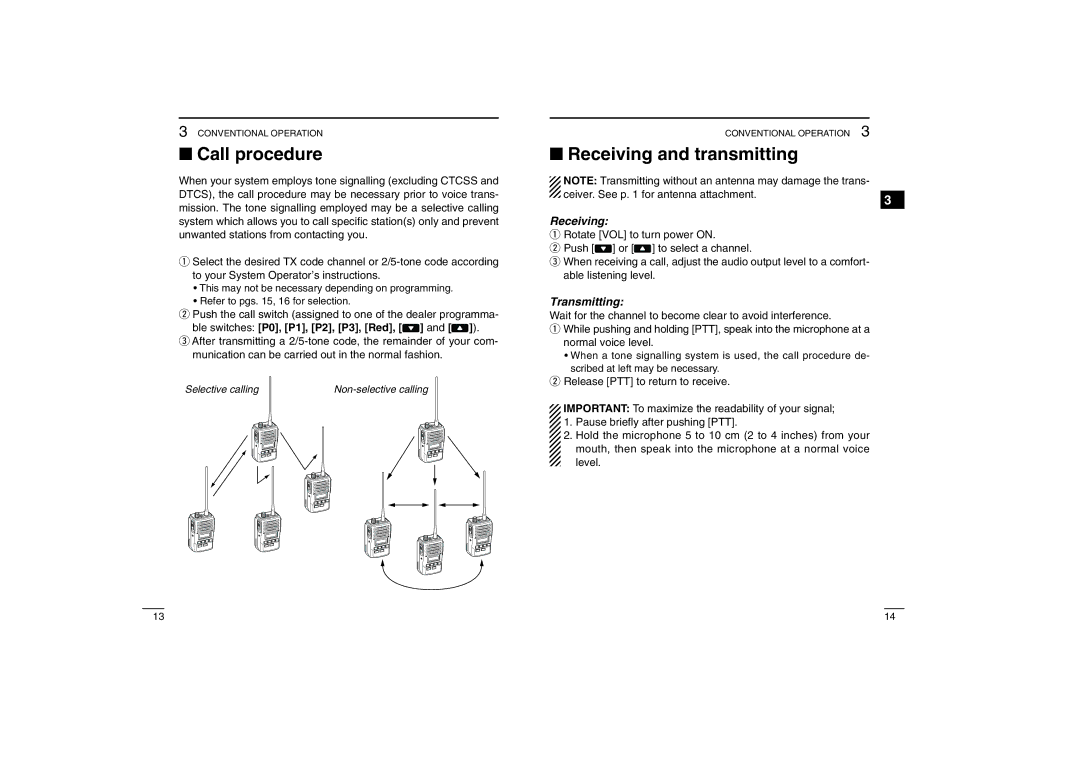
3 CONVENTIONAL OPERATION
■Call procedure
When your system employs tone signalling (excluding CTCSS and DTCS), the call procedure may be necessary prior to voice trans- mission. The tone signalling employed may be a selective calling system which allows you to call specific station(s) only and prevent unwanted stations from contacting you.
qSelect the desired TX code channel or
•This may not be necessary depending on programming.
•Refer to pgs. 15, 16 for selection.
wPush the call switch (assigned to one of the dealer programma- ble switches: [P0], [P1], [P2], [P3], [Red], [![]() ] and [
] and [![]() ]).
]).
eAfter transmitting a
Selective calling |
CONVENTIONAL OPERATION 3
■ Receiving and transmitting
NOTE: Transmitting without an antenna may damage the trans- |
|
ceiver. See p. 1 for antenna attachment. | 3 |
|
Receiving:
qRotate [VOL] to turn power ON.
wPush [![]() ] or [
] or [![]() ] to select a channel.
] to select a channel.
eWhen receiving a call, adjust the audio output level to a comfort- able listening level.
Transmitting:
Wait for the channel to become clear to avoid interference.
qWhile pushing and holding [PTT], speak into the microphone at a
normal voice level.
•When a tone signalling system is used, the call procedure de- scribed at left may be necessary.
wRelease [PTT] to return to receive.
IMPORTANT: To maximize the readability of your signal;
1.Pause briefly after pushing [PTT].
2.Hold the microphone 5 to 10 cm (2 to 4 inches) from your mouth, then speak into the microphone at a normal voice level.
13 | 14 |
